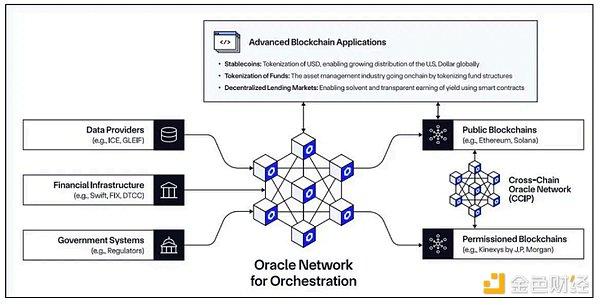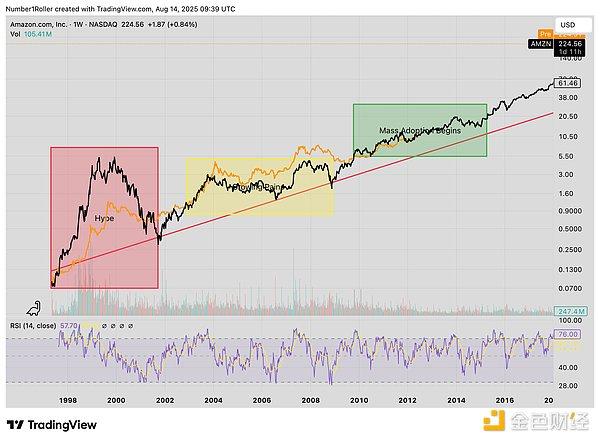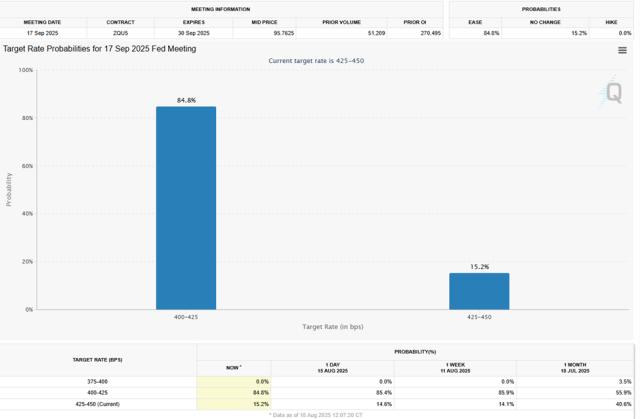As RWA tokenization and institutional adoption become the core narrative of this bull market, Chainlink, as a key infrastructure connecting traditional finance and the digital world, is poised to become the biggest winner. Miles Deutscher points out that Chainlink is more than just a project; its value capture mechanism forms a powerful "flywheel effect" - network usage growth will directly translate into continuous buying pressure and value accumulation for $LINK tokens.
Notably, the recently launched "$LINK Reserve" mechanism by Chainlink has demonstrated the real driving force of the "flywheel effect". This mechanism automatically converts and accumulates revenue from enterprise collaborations and on-chain services into $LINK tokens, directly linking the network's fundamental growth with token value. Since the announcement, $LINK token price has risen nearly 50%. The following is the original article, compiled by PANews.

$LINK might be one of the most obvious large-cap investment opportunities in this cycle, but most people might miss it. It is the biggest winner benefiting from cryptocurrency institutionalization and the explosive growth of stablecoins, tokenization, and RWA (Real World Assets).
This bull market highly aligns with Chainlink's narrative, mainly due to the following reasons:
Macro Trend Alignment
RWA total locked value has surged 13 times in the past two years, growing from around $1 billion to over $13 billion, becoming one of the most robust growth sectors in crypto.

Institutions have recognized the slow and inefficient SWIFT system and are unwilling to face fragmented fulfillment pain points, instead hoping to use a complete end-to-end platform. This explains why Wall Street giants like BlackRock are actively promoting asset tokenization, and why companies like Stripe (launching Tempo chain) and Circle (launching ARC chain) are building their own blockchains.
In a fragmented, multi-chain landscape, a "universal translator" is needed for interoperability, and Chainlink provides this solution. Any tokenized stock, bond, or real estate requires an oracle to bring its value on-chain, and $LINK is the market leader, holding 84% market share in the Oracle market on Ethereum alone, serving as the core infrastructure for this trillion-dollar transformation.
It's currently difficult to predict which L1 chain will prevail, especially with numerous enterprise chains entering the market, and it's uncertain which RWA application will emerge. But it's certain that Chainlink is powering all of this, becoming the most typical "gold rush shovel" investment target.
For a long time, the market generally believed XRP would represent institutional adoption, but from multiple perspectives, LINK's implementation in this field is even higher than XRP, and considering valuation, its upside potential is more attractive.
Data Comparison
· XRPL DeFi TVL is approximately $85 million
· Chainlink's Total Value Secured is approximately $84.65 billion

Chainlink's on-chain locked capital is over 1000 times that of XRPL, and its market share in the entire DeFi field continues to increase, currently reaching 68%. Despite this, XRP's market cap is still about 12.1 times that of LINK, making LINK more attractive at its current price range.

Notably, apart from Bitcoin and Ethereum, Chainlink's adoption in traditional finance (TradFi) far surpasses any other protocol and has been integrated by several TradFi giants, including:
· SWIFT
· DTCC (Depository Trust & Clearing Corporation)
· Euroclear
· JPMorgan
· Mastercard
Token Economics: Building a Value Flywheel
Chainlink network's value flow is primarily achieved through two income sources:

1. On-chain Fees: Generated when its services are used across different blockchain networks. These fees are used to fund network operations and $LINK token buybacks.
2. Enterprise Collaborations: Agreements with large companies and institutions like SWIFT or JPMorgan. Part of the funds enter the Chainlink reserve to support long-term development.
Currently, the protocol automatically converts all revenue (including $ETH or $USDC fees from private chains) into $LINK and stores it in a strategic treasury.

Additionally, the staking mechanism is crucial. Users lock $LINK to secure the network and receive approximately 4.32% sustainable annual yield. This creates a continuous supply contraction mechanism, removing tokens from the open market.
This creates a permanent, automated buyback mechanism that directly converts network adoption into buying pressure, forming a powerful value flywheel:

Increased Adoption → Higher Revenue → More $LINK Bought and Locked → Enhanced Network Security and Resources → Increased Utility
Technical Analysis and Summary

From a technical chart perspective, $LINK has broken through the weekly resistance zone of $20. This price level has been an important bull-bear conversion point for many years, with significance roughly equivalent to ETH's $4,000 level.
In summary, Chainlink's value can be understood as follows: If AWS, Azure, and GCP (three major cloud computing service providers) were to be spun off from their parent companies, their value would reach trillions of dollars. Chainlink is the foundational B2B infrastructure for the entire on-chain economy.
Click to Learn About BlockBeats Job Openings
Welcome to Join BlockBeats Official Community:
Telegram Subscription Group: https://t.me/theblockbeats
Telegram Discussion Group: https://t.me/BlockBeats_App
Twitter Official Account: https://twitter.com/BlockBeatsAsia







